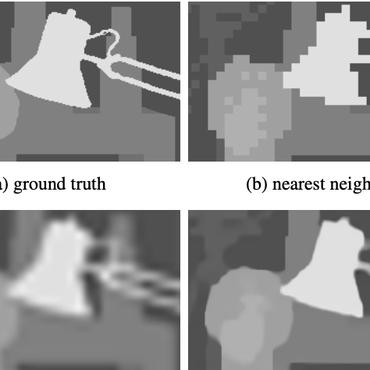Guided Image Restoration via Simultaneous Feature and Image Guided Fusion
Guided image restoration (GIR), such as guided depth map super-resolution and pan-sharpening, aims to enhance a target image using guidance information from another image of the same scene. Currently, joint image filtering-inspired deep learning-based methods represent the state-of-the-art for GIR tasks. Those methods either deal with GIR in an end-to-end way by elaborately designing filtering-oriented deep neural network (DNN) modules, focusing on the feature-level fusion of inputs; or explicitly making use of the traditional joint filtering mechanism by parameterizing filtering coefficients with DNNs, working on image-level fusion. The former ones are good at recovering contextual information but tend to lose fine-grained details, while the latter ones can better retain textual information but might lead to content distortions. In this work, to inherit the advantages of both methodologies while mitigating their limitations, we proposed a Simultaneous Feature and Image Guided Fusion (SFIGF) network, that simultaneously considers feature and image-level guided fusion following the guided filter (GF) mechanism. In the feature domain, we connect the cross-attention (CA) with GF, and propose a GF-inspired CA module for better feature-level fusion; in the image domain, we fully explore the GF mechanism and design GF-like structure for better image-level fusion. Since guided fusion is implemented in both feature and image domains, the proposed SFIGF is expected to faithfully reconstruct both contextual and textual information from sources and thus lead to better GIR results. We apply SFIGF to 4 typical GIR tasks, and experimental results on these tasks demonstrate its effectiveness and general availability.
PDF Abstract


